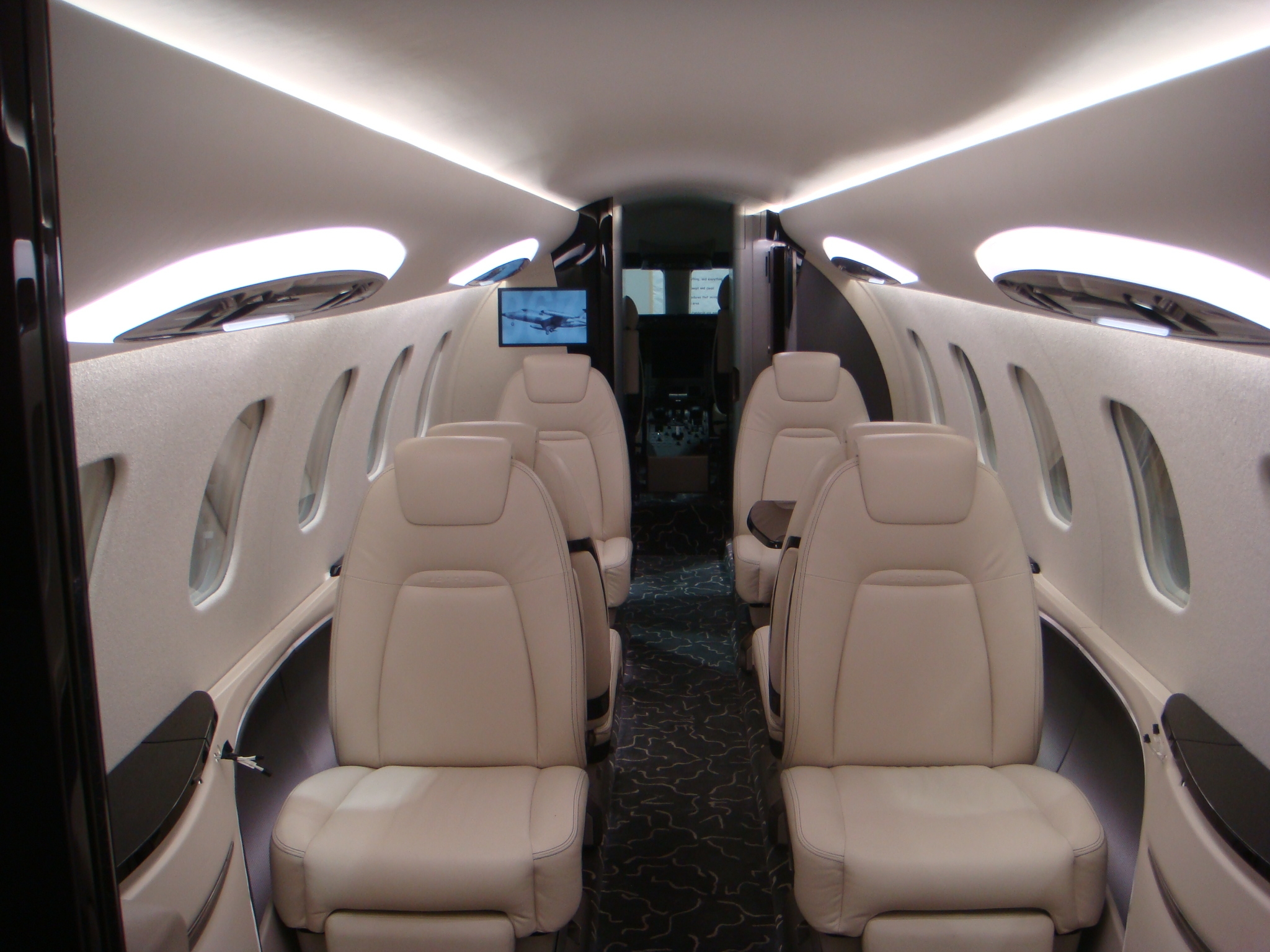Custom installation at 30,000 feet
The installation of an entertainment and lighting control system in a prototype Lear jet has proven that for custom installers, the sky is the limit. Paul Skelton reports.

“Part of the unique challenge of the project was working with the aviation engineers to design a look and function that would mimic a real aircraft. The mock-up is a real fuselage with no extra space, so careful design and foresight was taken to select and use the correct components and address ventilation considerations,” says Shannon McGinnis.
Oprah’s got one. So does the Queen. And don’t forget John Travolta.
The ultimate accessory of the rich and famous is a private jet of their very own. So it makes sense that they would want to include the benefit and luxury a fully-automated system into their mile-high home with wings.
ADVERTISEMENT
“When the request came in from our client to have a common processor to control the lighting, audio, and video in their prototype Lear 85; we were all on board from day one,” says Shannon McGinnis of Wichita, Kansas-based installer Home Technology Systems.
Part of the job was to design an interface around an LED micro switch for controlling the lighting loads.
“These micro switches are located on the arms of all of the coach seats and needed to have dimming functionality. Accomplishing this involved reading 23 switches and controlling 32 relay outputs,” he says.
These micro switches controlled all of the cabin, table, reading, lavatory, cockpit and entry lighting. The lighting system is also controllable from the Crestron panel located in the galley, and all AV control is selected from the same panel.
Designing the switch interface for I/O reading by the processor and also biasing the multicolour LED micro switches into proper colour operation required detailed planning. Resistors were soldered into the switch connection and a separate variable 28V power supply is used to control light, colour and intensity.
The audio system consists of six speakers and one subwoofer. There are two 15” monitors; one in the fore and one in the back of the prototype jet. There is one iPod that acts as the music server and two iPods to act as the video servers.
“Building on our electronic design and integration experience, we were able to help design the connection between the aircraft’s lighting and AV needs centred on the control processor, touch pad and light switches. We were able to design the switch matrix necessary for input reading and logic transitions required by the I/O cards.
“Part of the unique challenge of the project was working with the aviation engineers to design a look and function that would mimic a real aircraft. The mock-up is a real fuselage with no extra space, so careful design and foresight was taken to select and use the correct components and address ventilation considerations.
“The project was highly technical and we had to give it more design thought than a typical home integration project. It is not often that we use Ohm’s Law and power calculation formulas in home electronics integration or home theatre projects.”
As a prototype that travels on a trailer and tours the world, the audio, video, and lighting systems did not need to be FAA approved, which allowed greater flexibility.
Time sheet
Client interviews – 8 hours
Electronic design and engineering – 24 hours
Proposal and system documentation preparation – 5 hours
Project management – 15 hours
Pre-wire/rough-in – 15 hours
Trim-out – 6 hours
Shop time for racking and testing – 20 hours
Programming – 60 hours
Final installation and calibration – 8 hours
Client instruction – 4 hours
TOTAL 165 hours
Equipment List
3 x Apple iPods
2 x Cool Component racks
1 x Crestron CNPWS-75 75W power supply
3 x Crestron CNXRY-16 16 relay control card
2 x Crestron CNXIO-16 16 I/O Versiport control card
1 x Crestron CRESNET control system
1 x Crestron TPS-6 LBT touch panel
1 x Crestron CEN-IDOC interface for iPod
1 x Integra DTR 4.6 AV receiver
2 x Key Digital KD CDA3 3 channel Component Y-Pb-Pr distribution amplifier
2 x Key Digital KD VA5 Component to VGA universal video converter
1 x Linksys WRT 54G WiFi gateway
1 x Sunfire Super Junior subwoofer
2 x Tote Vision VPLCD1504HD monitor
Contact
Home Technology Systems
www.hometechnologysys.com
-
ADVERTISEMENT
-
ADVERTISEMENT
-
ADVERTISEMENT
-
ADVERTISEMENT
